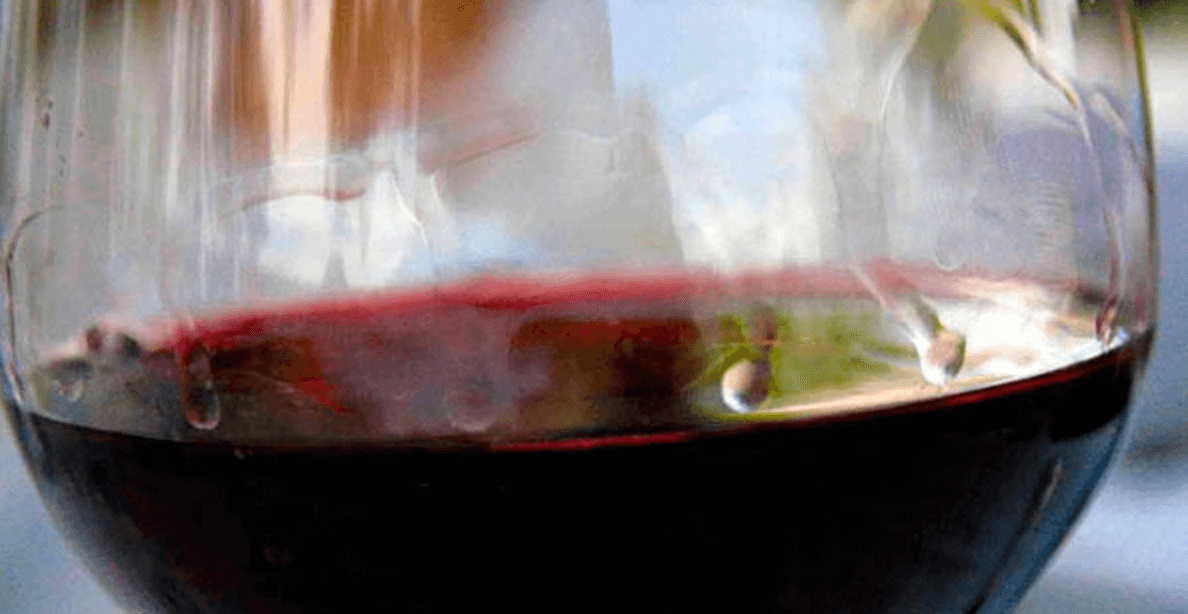Have you ever swirled a glass of wine and watched in fascination as droplets slowly trickled down the inside of the glass? These mesmerizing streaks, known as wine legs or “tears,” have fascinated wine enthusiasts for centuries. Many believe these elegant formations indicate superior quality or reveal hidden secrets about the wine’s character. But what do wine legs tell us, and should they influence your wine selection?
Wine legs are one of the most misunderstood phenomena in wine appreciation. While they create an undeniably beautiful visual display, their significance has been greatly exaggerated in popular wine culture. The truth is far more scientific and less mystical than many wine lovers believe. These droplets form due to a fascinating physics principle called the Gibbs-Marangoni Effect, which occurs when alcohol evaporates from the wine’s surface at a different rate than water.
Understanding wine legs properly can enhance your wine knowledge and help you avoid common misconceptions that plague casual wine discussions. Rather than indicating quality, wine legs provide specific information about alcohol content, sugar levels, and viscosity. This knowledge empowers you to make more informed decisions about wine selection and appreciation, moving beyond superficial observations to a genuine understanding of what’s actually happening in your glass.
What Are Wine Legs Exactly?

Wine legs are the thin streaks or droplets of liquid that form on the inside surface of a wine glass after swirling. Also known as “tears of wine” by the French, or sometimes called “church windows,” these formations appear as the wine climbs slightly up the glass before gravity pulls it back down in visible streams.
The formation process begins when you swirl wine in your glass, creating a thin film of liquid on the glass surface. As alcohol evaporates from this film, it leaves behind a water-wine mixture that collects into droplets on the glass sides. These droplets then slowly trickle down the glass, creating the characteristic “leg” appearance that has fascinated wine drinkers for generations.
The scientific explanation involves surface tension differences between alcohol and water. Since alcohol has a lower surface tension and evaporates faster than water, this creates an imbalance that forces the remaining liquid to form these distinctive patterns. This phenomenon only occurs when wine is exposed to air – if you shake a closed bottle of wine, no legs will form because no evaporation is taking place.
The Science Behind Wine Legs: The Gibbs-Marangoni Effect
The formation of wine legs is governed by a well-understood scientific principle called the Gibbs-Marangoni Effect. This phenomenon results from fluid surface tension caused by alcohol evaporation, creating the mesmerizing patterns we observe in wine glasses.
When wine is swirled, alcohol begins evaporating from the surface at a faster rate than water due to its lower boiling point and surface tension. This differential evaporation creates a concentration gradient where the remaining liquid has a higher water content and increased surface tension. The higher surface tension forces the liquid to climb up the glass slightly before gravity overcomes this force, causing the wine to flow back down in streaks.
Temperature and humidity significantly affect leg formation rates. In warmer, drier conditions, alcohol evaporates more quickly, leading to more pronounced leg formation. Conversely, cooler, more humid environments slow the evaporation process, resulting in less dramatic leg displays. This explains why the same wine might show different leg characteristics when tasted in different seasons or locations.
What Wine Legs Actually Indicate

Contrary to popular belief, wine legs are not indicators of wine quality. Instead, they provide specific information about the wine’s composition and characteristics that can be useful for understanding what you’re drinking.
Alcohol Content is the primary factor influencing leg formation. Wines with higher alcohol content typically display more pronounced and numerous legs because there’s more alcohol available to evaporate. This can be particularly helpful during blind tastings when you’re trying to estimate whether a wine is above or below 14% alcohol by volume.
Sugar Levels also affect leg appearance. Sweeter wines tend to show thicker, slower-moving legs due to their higher viscosity. The increased sugar content makes the wine more viscous, causing the droplets to flow more slowly down the glass sides. This characteristic can help distinguish between dry and sweet wines during tasting.
Wine Body and Texture can be partially assessed through leg observation. Fuller-bodied wines often display slower-moving, more substantial legs compared to lighter-bodied wines. However, this should be considered alongside other tasting factors rather than relied upon exclusively.
Common Myths About Wine Legs Debunked
One of the most persistent myths is that more legs indicate higher quality wine. This misconception has led countless wine drinkers to judge wines based on their leg formation rather than taste, aroma, and balance. Quality wine assessment requires evaluating multiple factors, including flavor complexity, balance, finish, and harmony – none of which are revealed by leg formation.
Another common misconception is that wine legs can accurately predict specific alcohol percentages. While legs can suggest whether a wine is higher or lower in alcohol, they cannot provide precise measurements. Professional wine evaluation relies on tasting techniques and label information rather than visual leg assessment.
Some believe that the speed of leg formation indicates wine age or complexity. However, leg formation speed is primarily determined by environmental factors like temperature and humidity, not wine age or quality. Older wines may show different leg characteristics due to changes in alcohol content or viscosity over time, but this doesn’t necessarily correlate with improved quality.
How to Properly Observe Wine Legs

If you want to examine wine legs for educational purposes, proper technique ensures accurate observation. Hold your wine glass at an angle and allow the wine to flow up one side of the glass. Then level the glass and observe how the wine flows back down, noting both the viscosity and the density of legs that form.
Pay attention to the speed at which the legs move down the glass. Slower-moving legs may indicate higher sugar content or viscosity, while faster-moving legs suggest lower viscosity. The number and thickness of legs can provide clues about alcohol content, with more numerous, thicker legs generally indicating higher alcohol levels.
Remember that glass cleanliness affects leg formation significantly. Residual soap, oils, or other substances on the glass can interfere with proper leg development. Always use clean, dry glasses for accurate observation.
The Bottom Line on Wine Legs
Wine legs are an interesting scientific phenomenon that can provide some information about a wine’s alcohol content and sugar levels, but they should never be used as quality indicators. Professional wine evaluation focuses on taste, aroma, balance, and drinking experience rather than visual phenomena.
Understanding wine legs can enhance your wine knowledge and help during blind tastings, but don’t let leg formation influence your wine purchasing decisions. Instead, focus on developing your palate, learning about different grape varieties and regions, and understanding what you enjoy in wine. The most important aspect of wine appreciation is finding wines that bring you pleasure, regardless of how many legs they display in your glass.


